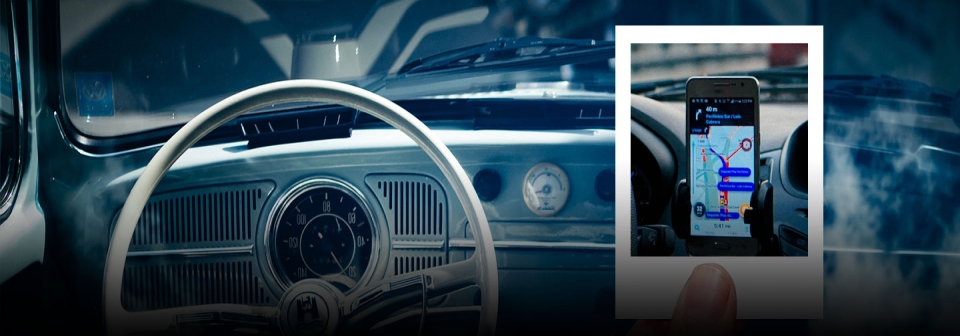Once upon a time baby boomers were teenagers, the American dream was gold and owning a car was the ultimate status symbol. The automotive industry enjoyed limitless enthusiasm from its customers since so many important moments in their everyday lives depended on the freedom their vehicles provided.
Fast forward to now: a world of artificial intelligence, globalisation and urbanisation. Most young urbanites are tech-obsessed, air pollution is a health threat, and connection is achieved via smartphones.  Owning a car lacks the appeal it once held: millennial’s passion now lies firmly with technology. as can be seen in their interest in pay per use models, immediacy, and the sharing economy.
Owning a car lacks the appeal it once held: millennial’s passion now lies firmly with technology. as can be seen in their interest in pay per use models, immediacy, and the sharing economy.
All of which is compounded by the limited spending power of some millennials. The rising costs of city living mean payments must be prioritised, often in monthly rhythms. As a result, the desire to own amongst this audience has been replaced by the desire to access goods and services. Twenty-somethings tend to struggle to make ends meet each month, prioritising instant pleasure and sacrificing large purchases for more flexible models like rental or car sharing.
Yet these issues also create exciting opportunities. The ascendancy of the sharing economy has created an increasing number of car-pooling services, presenting a big opportunity for new brands and platforms to expand and democratise access to cars. Advancements in smartphone technology mean that mobile phones can now be integrated with cars and car sharing services.
The question is: how can automotive and mobility brands meet the needs of tech-savvy youngsters ‘in the moment’?
1. Offer timely ride solutions
Today’s hyper-connectivity has enabled a deluge of fresh mobility solutions. The ‘on-demand economy’ has seen swarms of younger people adopting services like e-hailing through the likes of Uber, or car sharing via BlaBlaCar or Car2Go. In fact, our Mobility studies show that almost half of 18-29 year olds are keen to share their cars (compared to only 1 in 3 of over 40s) and 75% of urbanites are using mobility apps to organise or guide their journey.
In addition smartphone-first platforms are also developed by automotive brands, like the FordPass. These are innovative one-stop mobility apps that enable people to instantly find the right mobility solution the moment they need it. They represent a growing market that focuses on car ‘usage’ instead of ownership, giving brands an opportunity to start building a relationship with young people much earlier than traditional car ownership allows.
BlaBlaCar goes one step further, leveraging a key moment for this audience (the need for a lift by match making those who need a ride with those offering one).
In this ad, they bring to life a moment that young people can relate to: being able to spend Valentine’s Day with their partner.
2. Introduce a ‘millennial-centric’ package
 Hyper-connected millennials have very different needs to affluent baby boomers or their Gen X parents. Auto brandswhichdesign with these needs in mind and promote their product in a way that appeals to younger people, will reach this cohort.
Hyper-connected millennials have very different needs to affluent baby boomers or their Gen X parents. Auto brandswhichdesign with these needs in mind and promote their product in a way that appeals to younger people, will reach this cohort.
Indeed, demonstrating a car’s connectivity features when presenting a car improves sales and usage, especially amongst a younger audience. Smaller, digitally enabled cars for cities allow younger people to stay connected as they drive, meeting their infotainment needs, from sat-nav to Spotify, the moment they arise. Among the three main benefits of connected cars – improved safety, enhanced driving experience and infotainment, the latter appeals most to the younger audience.
Payment models are changing too, since younger people tend to measure affordability on a monthly basis, rather than as a total price to pay. Auto brands are appealing to this mindset by extending leasing programmes for car usage almost everywhere, breaking the custom of ‘buying a car to own’ and replacing it with a monthly payment model demonstrating the impact this audience is having on the sector.
3. Digitise your showroom
The path to purchase for car buyers has evolved quickly in the last decade, with digital touchpoints challenging the role of dealer showrooms as the biggest influence on car buying decisions. Accordingly, our Connected Life study shows that  72% of 16-30 year olds already have their minds made up before entering a showroom to buy a new car.
72% of 16-30 year olds already have their minds made up before entering a showroom to buy a new car.
Automotive brands must creatively reach people in other ways, by anticipating and tapping into the moments that matter preceding a purchase.
They established a virtual showroom called ‘Live Store’, which allowed potential customers to view vehicles close-up from the comfort of their sofa, and ask questions of an expert wearing an eye-level camera. Not only that, but the device allowed them to view accessories available on screen and book a test drive right there and then. The results were striking: 67% of video chats led to test drives.
Moving further down the purchase journey, Hyundai have gone a step further, allowing customers to buy a car with a simple click online, appealing to the millennial hunger for instant gratification in an on-demand economy.
Big challenges, huge opportunities
The automotive industry has responded to changing customer needs and a big challenge from technology with a period of intense innovation. From Nissan’s consumer-to-consumer online forum which responds to potential Leaf customer’s questions about this electric vehicle, to Chrysler ‘co-creation portal’, designed by millennials for millennials, manufacturers are rethinking product design and marketing for a tech savvy generation.
Brands must carefully define and target the key moments of interaction with these new audiences, responding to the ways younger people live, what they value and how they spend their money. They must not be afraid to push the boundaries of their business models with pioneering products and services that meet these changing needs.









